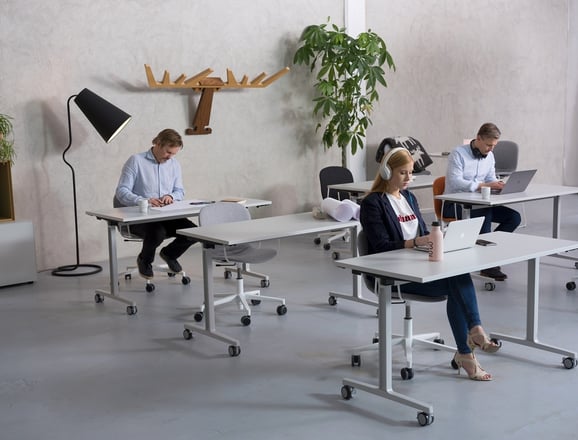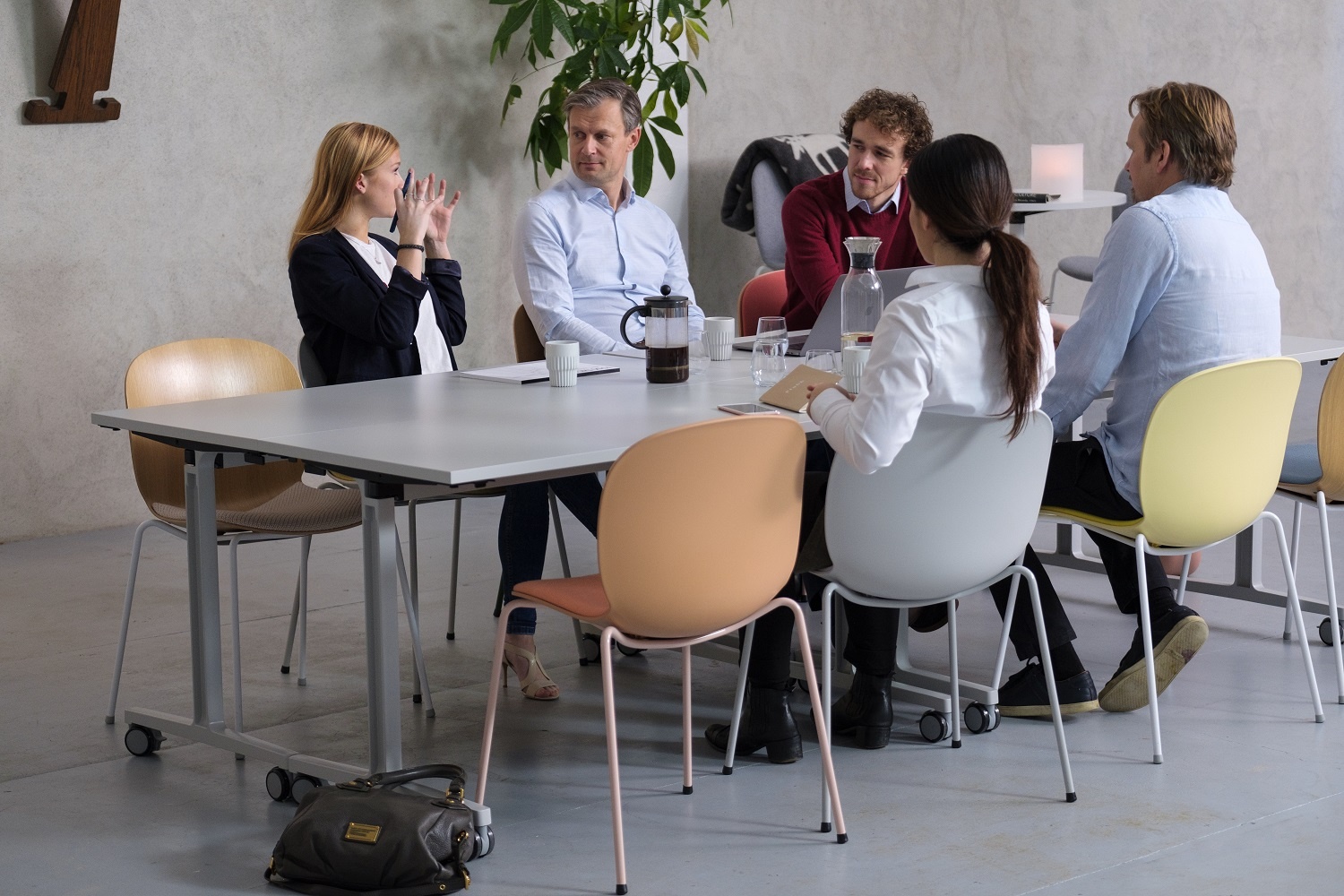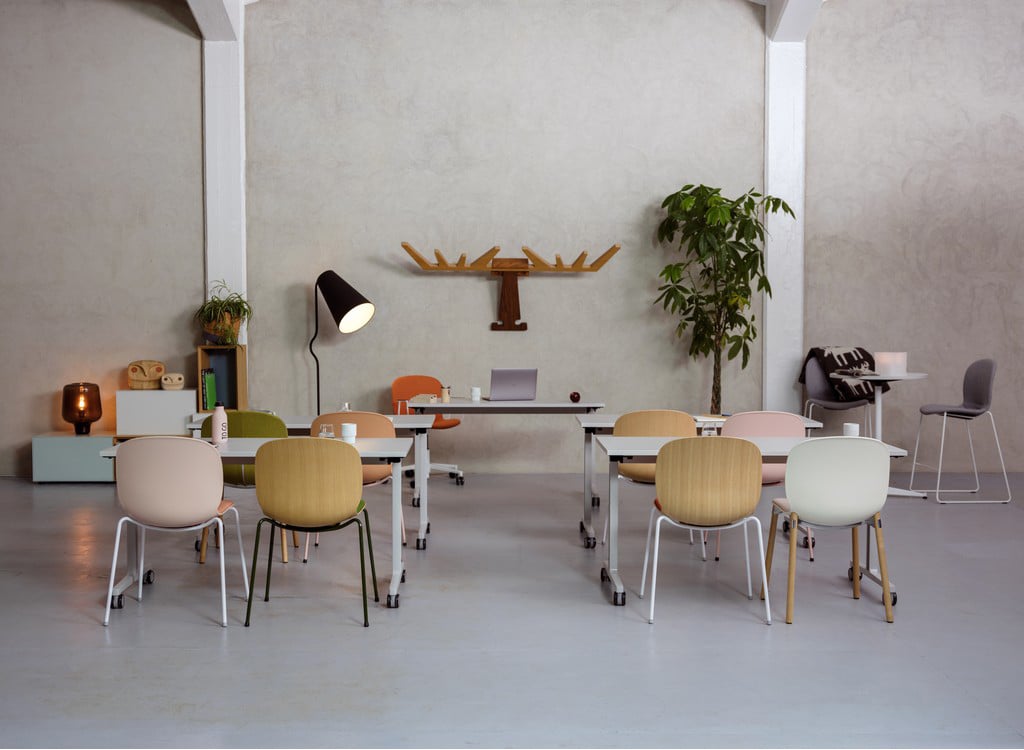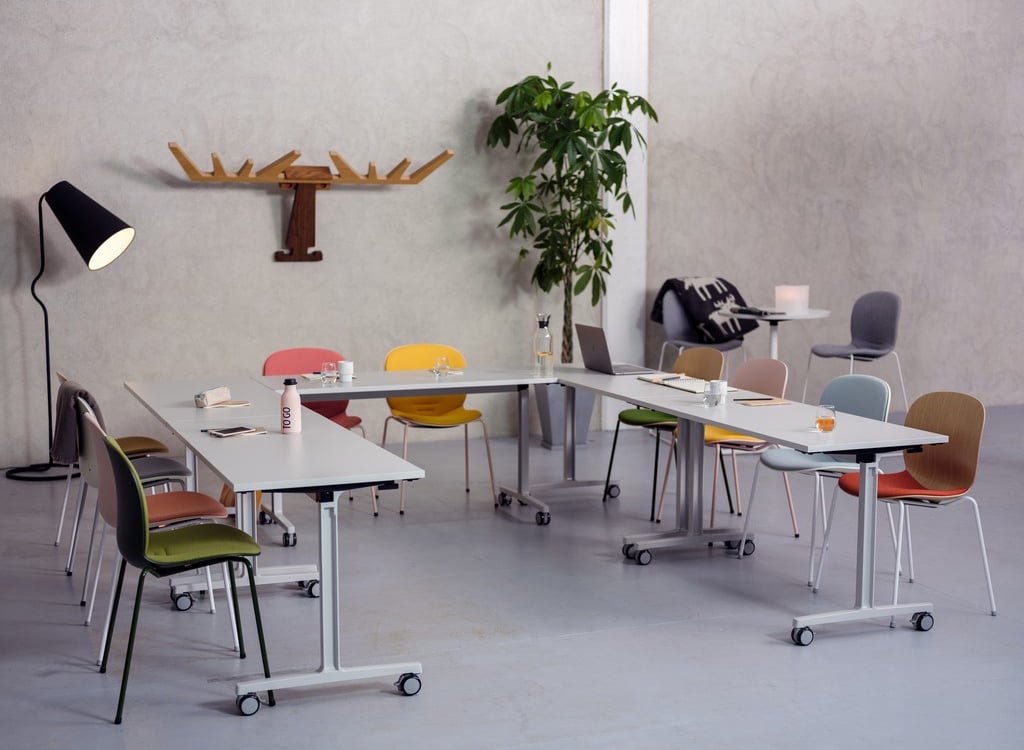But it can also be much more. By adding personality and colour to your everyday environments, you can maximise on the benefits your workplace can give to people. So how can you adopt agile working practices? And what are the benefits of agile working?
Key features of agile working
Adopting an agile working formula in the workplace centres on several crucial elements in the way you work. These include:
Flexibility
The ability to work when where and how employees find the most suitable. By reducing the limitations set by standard working procedures, employees can find the most productive way of completing tasks.
Read - Designing workplaces for collaboration - a roundtable discussion with Mix Interiors
Complimentary working environment
One of the most important aspects of agile working is providing an environment best suited to the practice. When it comes to furniture for agile working, environments should be designed to support people in achieving their goals of flexibility, productivity and efficiency, and allow ease of collaboration when necessary.
Above all, it’s about flexibility – allowing each task to be carried out in the most efficient way. To do this, you need to plan out your spaces accordingly and provide suitable furniture for each environment.
Flokk brand RBM produces a range of furniture designed for flexibility and adaptiveness. The RBM u-Connect combined with the RBM Noor are flexible, light and easy to use pieces of furniture, which together create an array of environments perfect for agile working. Available in a playful colour range, they also add character to the workplace.
They are especially suitable when space is a premium, such as start-up companies, allowing for different environments to be quickly created within the same physical space.
Technology
Agile working environments often make the most of tech tools available. The latest communication platforms, collaboration tools and project management resources can help keep everyone on the same page, without excessive amounts of meetings, discussions and emails.
THE BENEFITS OF AGILE WORKING
One of the main advantages of agile working is increased productivity. Providing an activity-based environment and allowing individuals to work from any setting they choose allows the seamless combination of focused, collaborative and creative work, which leads to better productivity. Research by talent management firm BSP World found that 67% of agile businesses reported a significant boost to their productivity, up to 20% in some instances.
Aside from increased productivity, there are several other key benefits for agile working.
They include:
- Increased freedom and sense of autonomy for workers
- Improved well-being, sense of happiness and job satisfaction
- Reduced operating costs due to better space management
Agile working is becoming more popular, and it is increasingly seen as an attractive model for employees. A survey in 2017 found that some would even be willing to sacrifice a percentage of their annual salary for the opportunity. 86% of the study said they would even change jobs to accommodate this preference.
Jobsite CEO Nick Gold, whose company conducted the survey said: “The drive to meet the changing needs of more digitally-aware generations entering the workforce– as well as the constant requirement for businesses to push for increased productivity, reduced costs and faster innovation – has pressured many to evaluate their working practices. The digital transformation of the office is no longer an option to be ignored, for businesses who want to compete.”






